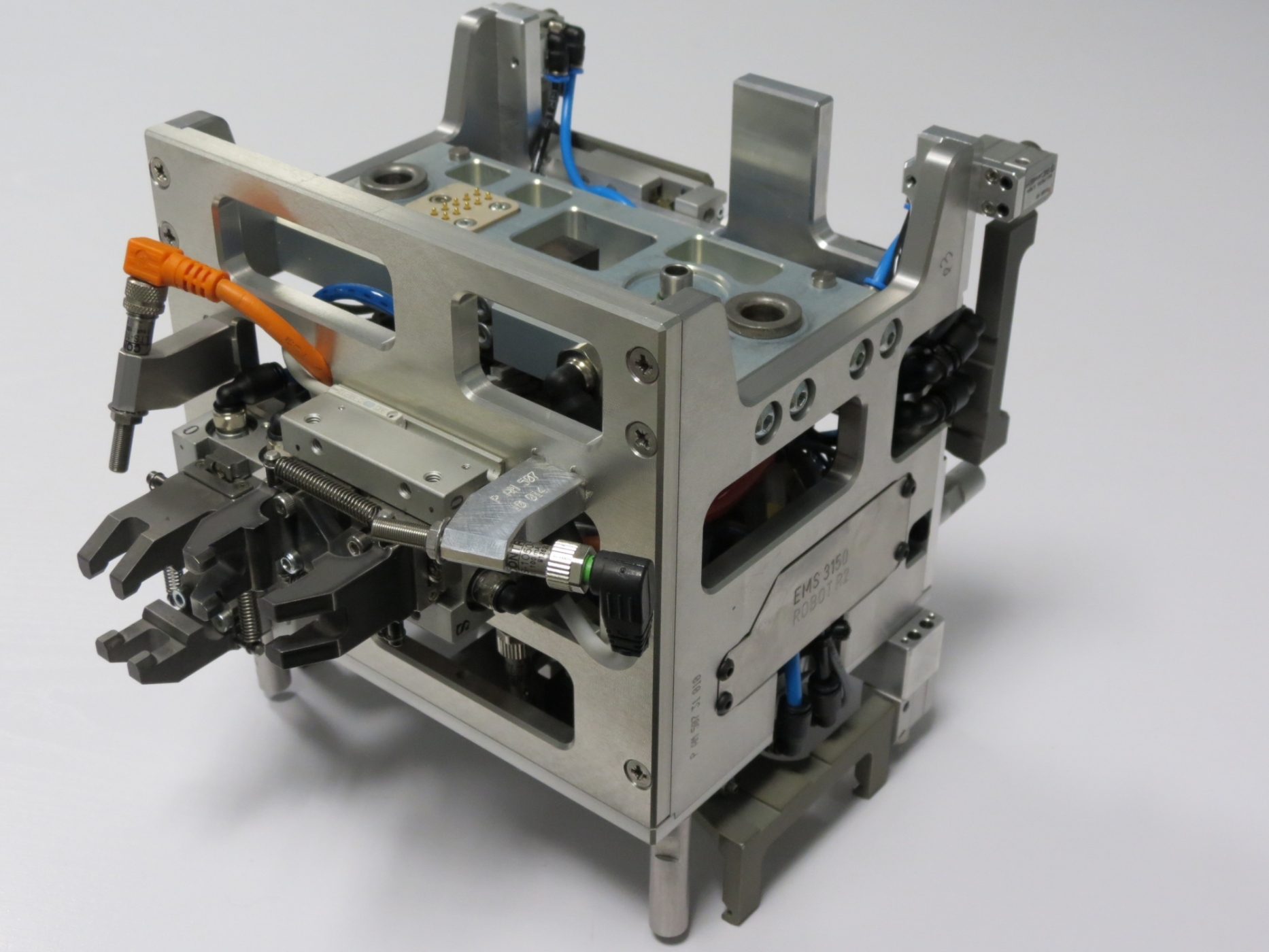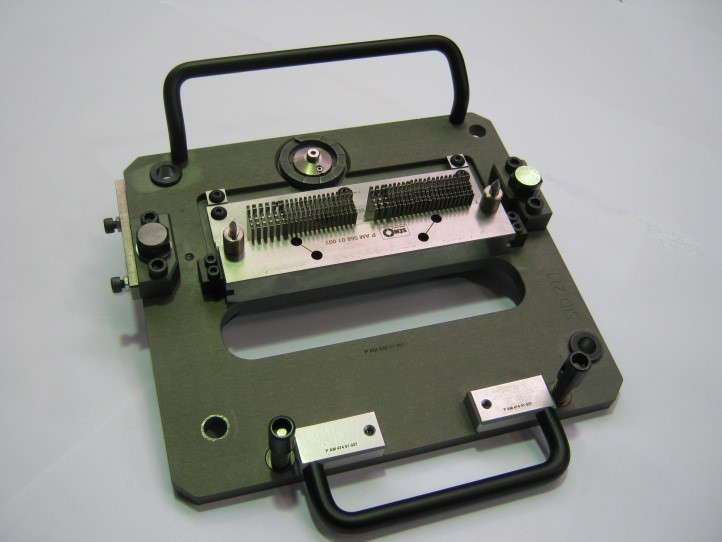Pressfit
What are the principles of pressfit?
Used for example in the telecommunications or industrial automobile industry, pressfit is a process which enables assembly without soldering whilst ensuring excellent connections. This technology allows the improvement in product quality and a reduction in the production costs. The implementation of pressfit requires a mastery of engineering and manufacturing of highly precise tooling.
When to use Pressfit?
This process involves forcefully pressing some pins into metalized cross holes of a printed circuit board. This allows the connectors, another PCB or other components to be assembled on an electronic board without using conventional selective soldering. The components to be assembled are manually or automatically (by collaborative robots for example) placed into adapted product fixtures. The PCB is then put into location with the help of a self-centering fixture before being pressed onto the component or components with specific tooling:
- The lower part of the tooling containing the component and then the PCB to the pressfitted
- The upper part of the tooling then presses the PCB onto the component.
What are the advantages of pressfit for electronic integration?
Product assemblies that are performed using Pressfit are very reliable and solid. The concept of Pressfit is known to be simple and to allow for high speed production. Compared to conventional soldering, it is efficient and has numerous advantages which make it very popular in the electronic industry.
SEMO's combined expertise in tooling and in the integration of machines means that it can design and produce highly accurate Pressfit tooling and machines. This applies even to complex electronic products with all of the vision interfaces necessary to ensure correct positioning.

